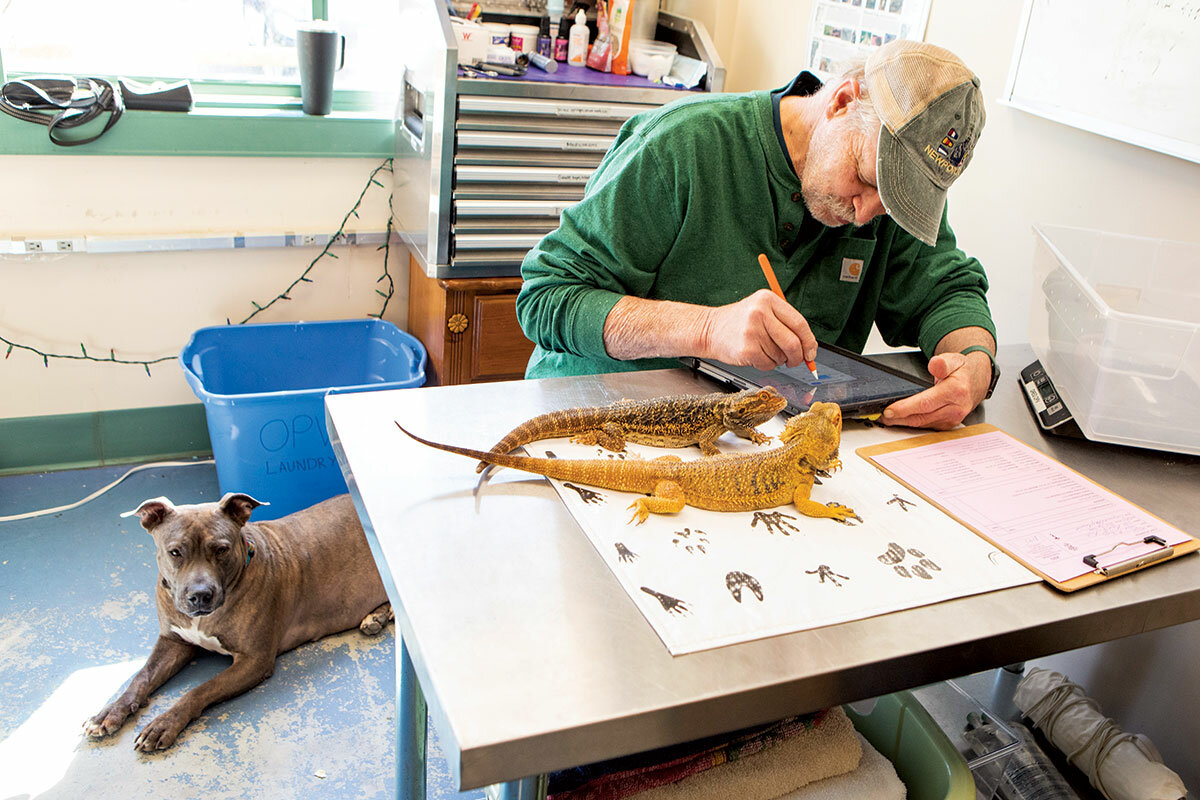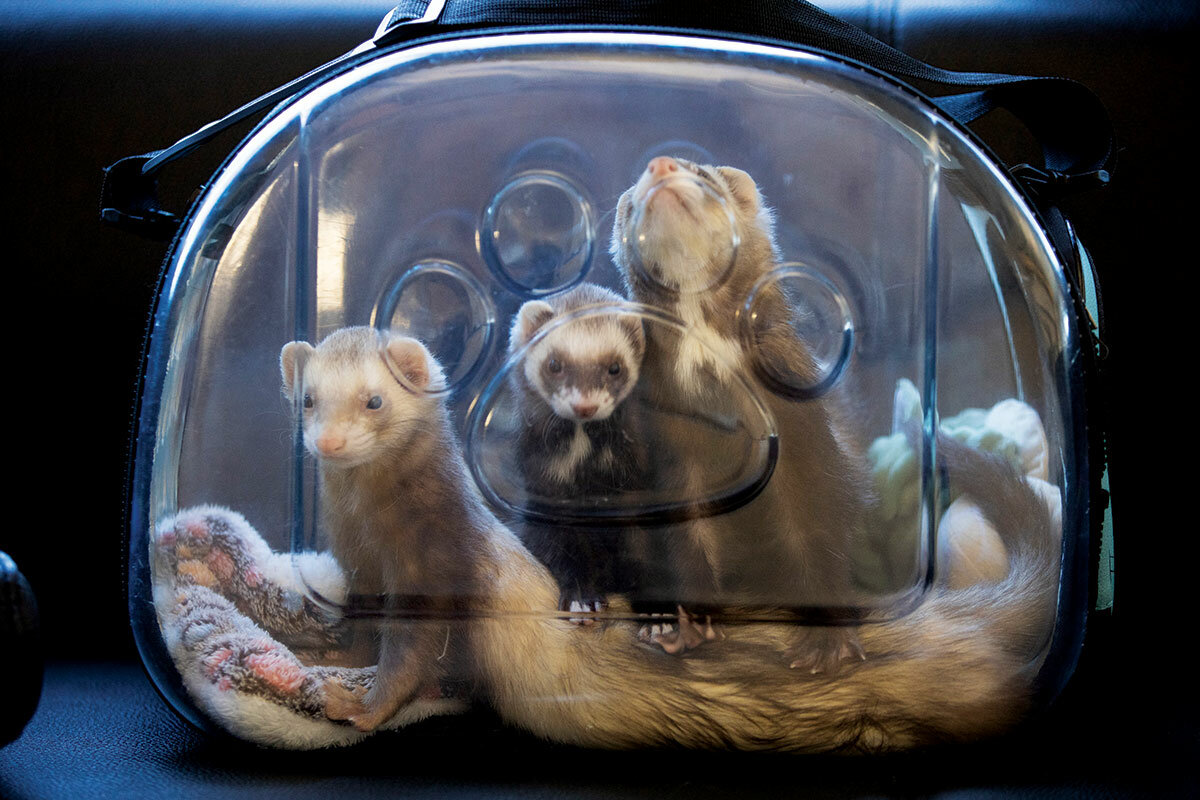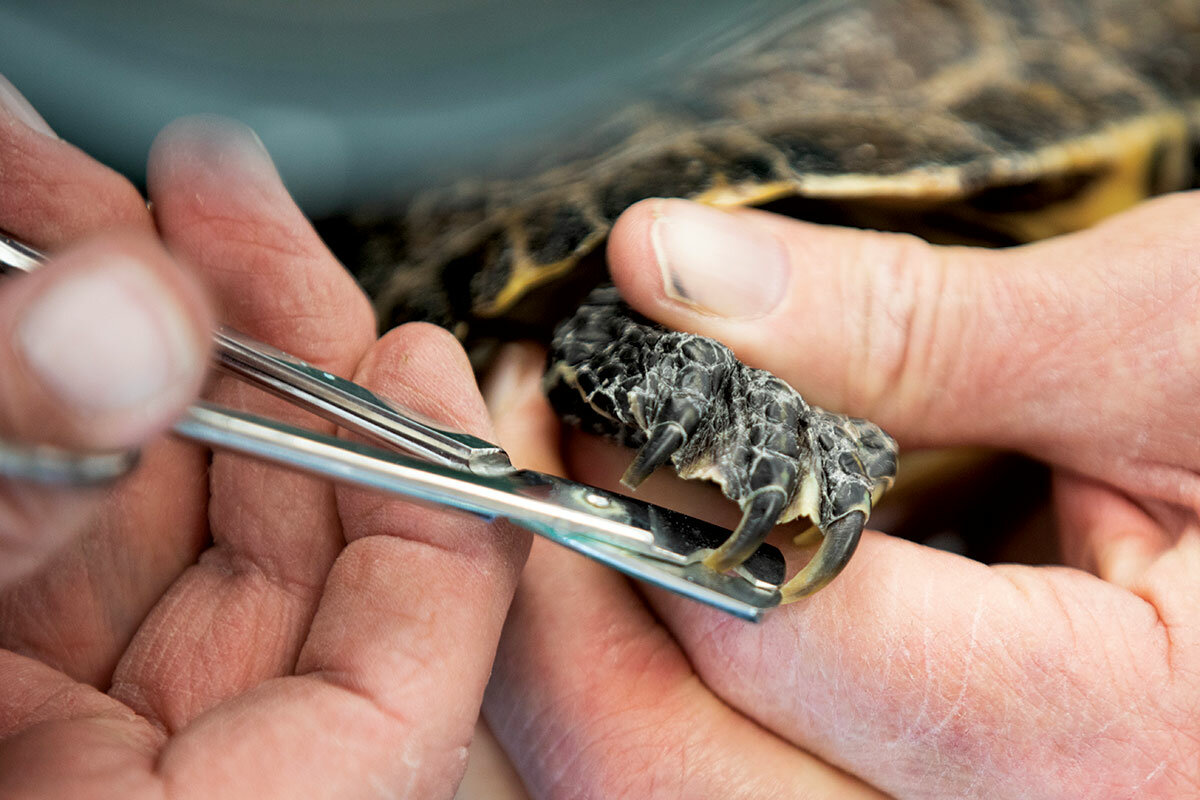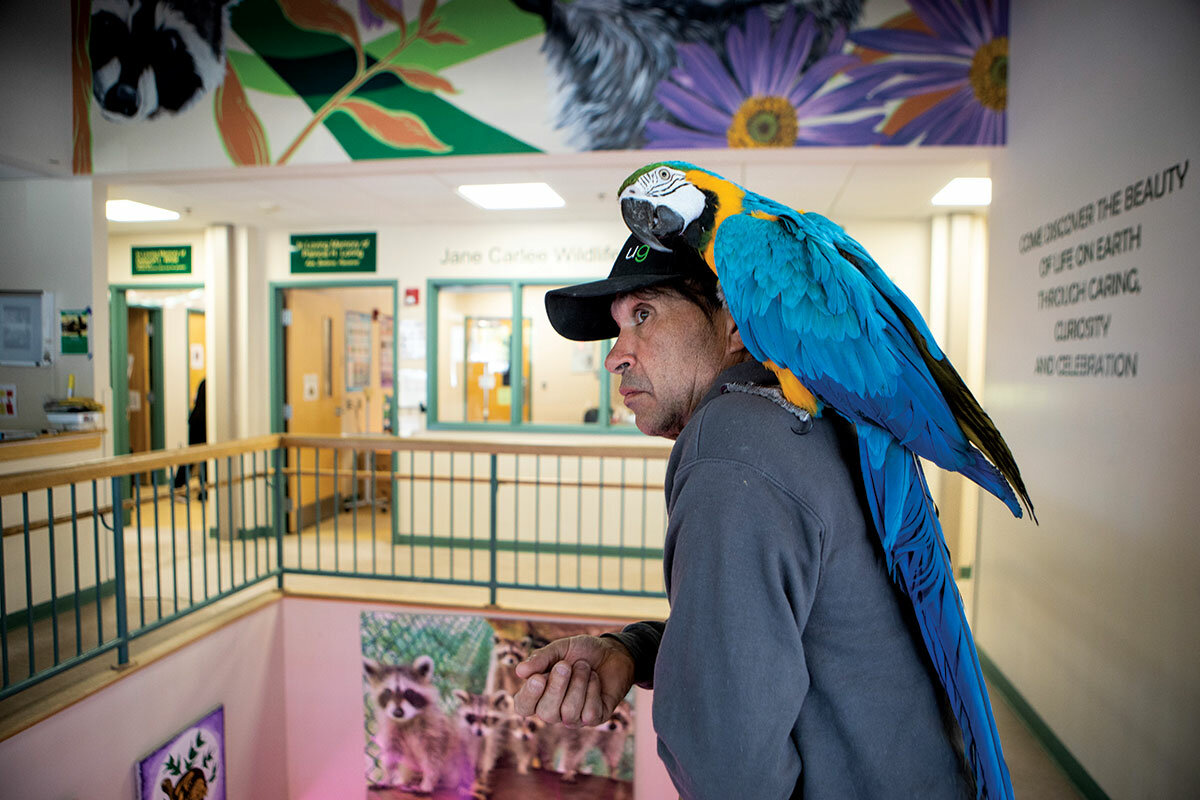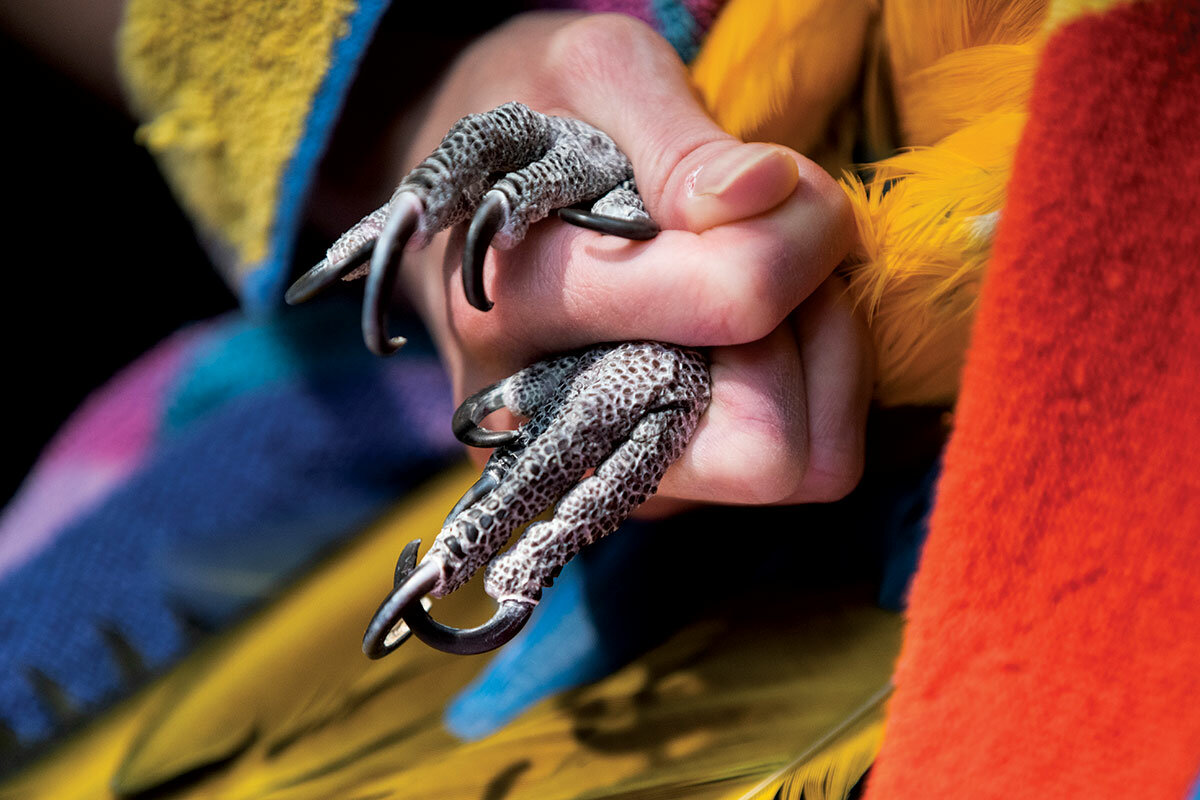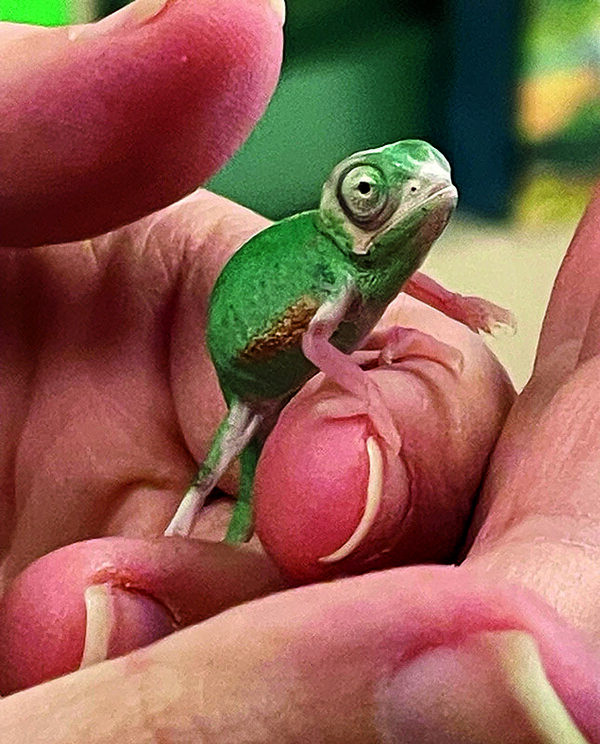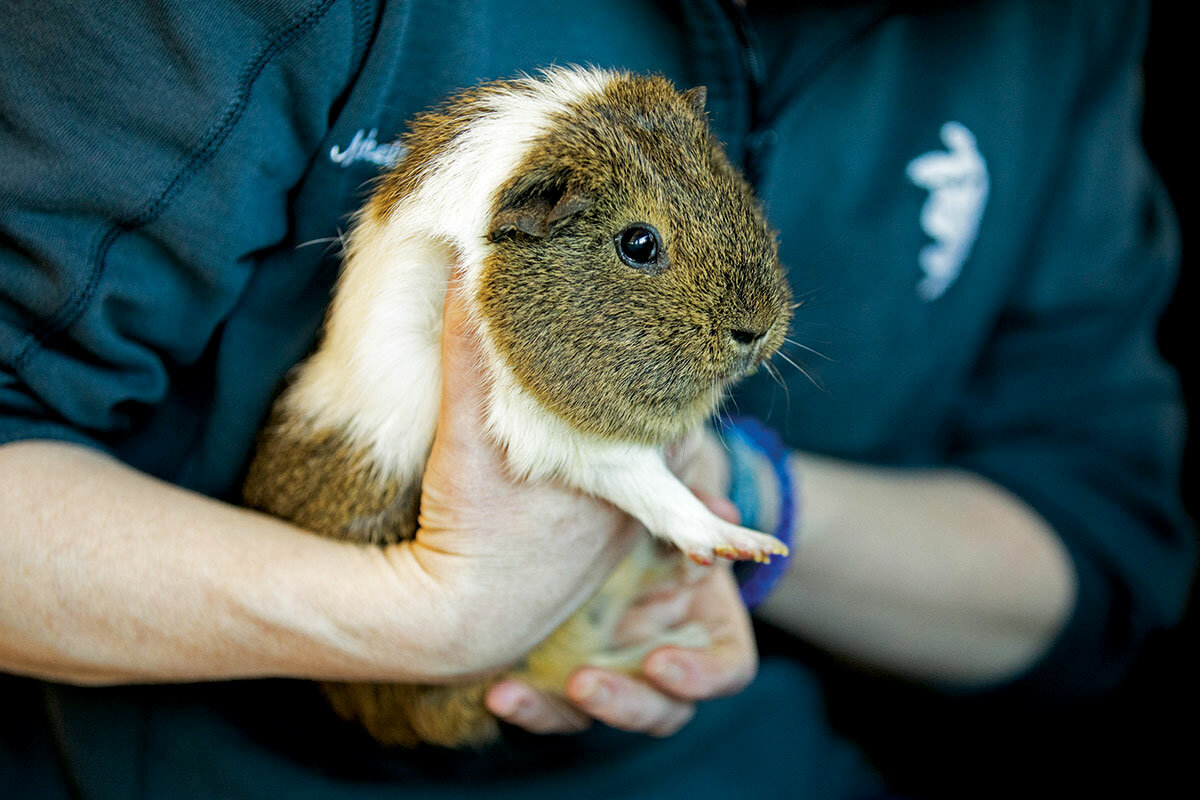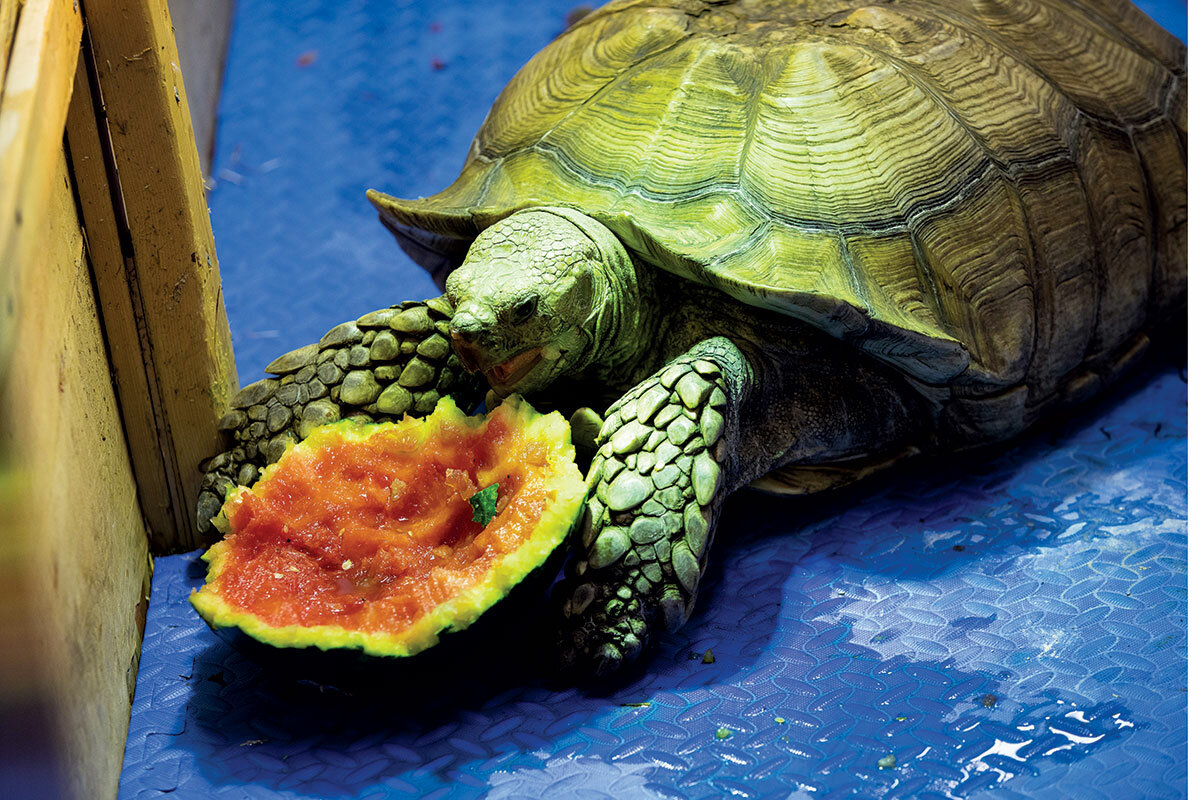In Pictures: At Odd Pet Vet, quirky critters find love and care
Loading...
| Weymouth, Mass.
Walk into Odd Pet Vet, and you may come across a tortoise, a Flemish Giant rabbit, or a red-tailed hawk. You may also see a few dogs running around, but those belong to the staff. Odd Pet Vet doesn’t treat the furry canines – or cats, for that matter.
The clinic only treats “exotic” animals: birds, reptiles, mammals like ferrets and hedgehogs, and even spiders and centipedes.
“What we consider an exotic animal is a legal, nontraditional pet,” says Greg Mertz, Odd Pet Vet’s lead veterinarian. “Emphasis on the legal.”
Why We Wrote This
A story focused onLove comes in many shapes and sizes. At Odd Pet Vet, veterinarians embrace peculiar pets – and the people who adore them.
Dr. Mertz has always been fascinated by unusual animals. He’s also the director of the New England Wildlife Center, where wild animals – which cannot be kept as pets – can receive treatment. But when people began asking him for help with their exotic critters at home, he launched Odd Pet Vet in 1995. And now, the pet business helps fund the wildlife center.
Jarrod McFarland of Providence, Rhode Island, brings in his pet chameleon, Skittles, on a cloudy April day. He cradles the small animal in his outstretched hand, scaly legs in a pattern of scarlet, lime-green, and sky-blue clinging tightly to his fingers.
“I’ve always liked reptiles,” he says. “I liked dinosaurs when I was younger, so I think that’s where it comes from.”
After looking at Skittles, Dr. Mertz switches his focus to a rabbit, and later a guinea pig. Amid the multitude of different species, one idea provides consistent guidance. “Listen to your client,” he says. “It’s always ... you being respectful of the knowledge that they have.”
His line of work brings him into contact with a variety of people, some of whom are as interesting as their pets. In fact, they’re a big part of what draws him to his work.
“Anybody that has odd pets ... they have a nontraditional way of looking at the world,” he says.





